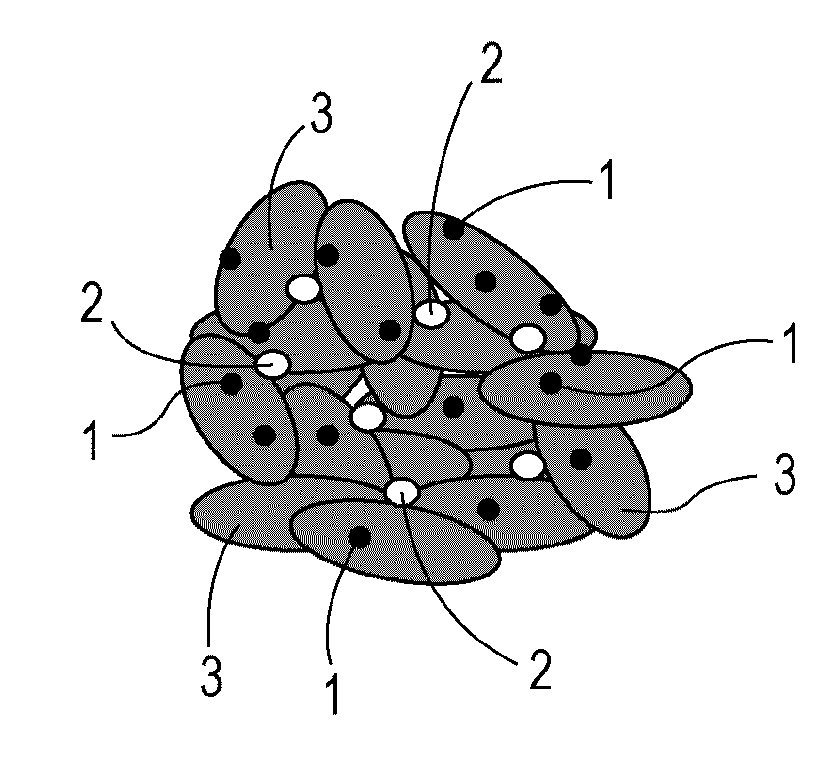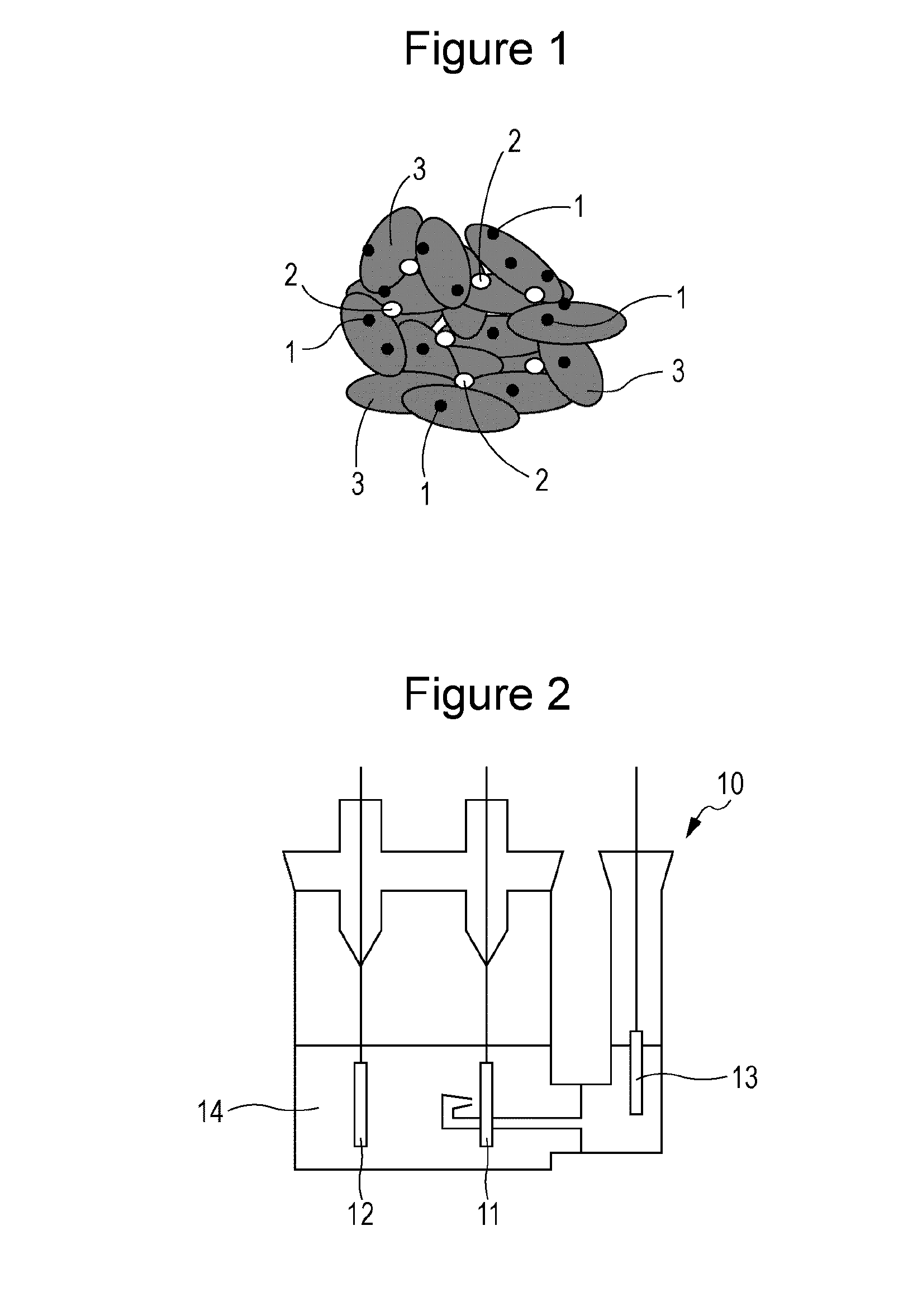Positive electrode for non-aqueous electrolyte secondary battery and non-aqueous electrolyte secondary battery
- Summary
- Abstract
- Description
- Claims
- Application Information
AI Technical Summary
Benefits of technology
Problems solved by technology
Method used
Image
Examples
examples
[0054]Hereinafter, the present invention will be described further in detail on the basis of specific examples. However, the present invention is not limited to the examples below. The present invention can be applied with appropriate modifications without departing from the spirit and scope of the present invention.
first example
Example
Synthesis of Positive Electrode Active Material
[0055]Particles (1000 g) of lithium nickel cobalt manganese oxide represented by LiNi0.55Co0.20Mn0.25O2 were placed in 3 liters of pure water and stirred. Subsequently, to this solution, a solution in which 4.58 g of erbium nitrate pentahydrate was dissolved was added. At this time, a 10 mass % aqueous solution of sodium hydroxide was appropriately added such that the solution containing lithium nickel cobalt manganese oxide had a pH of 9. Subsequently, suction filtration and rinsing were performed. After that, the resultant powder was dried at 400° C. to provide lithium nickel cobalt manganese oxide on the surface of which erbium oxyhydroxide was uniformly fixed. After that, to 99.5 mol of the lithium nickel cobalt manganese oxide, 0.5 mol of tungsten trioxide having an average particle size of 150 nm was added and mixed, so that tungsten trioxide was made to adhere to the surface of the lithium nickel cobalt manganese oxide. In...
second example
Example
[0073]A test cell was produced as with the Cell A except that, during adhesion of tungsten trioxide to the surface of the lithium nickel cobalt manganese oxide on which erbium oxyhydroxide was uniformly fixed, to 99.9 mol of the lithium nickel cobalt manganese oxide, 0.1 mol of tungsten trioxide having an average particle size of 150 nm was added and mixed.
[0074]The thus-produced cell will be referred to as Cell B.
Experiments
[0075]The Cell B and the Cells A and Z2 described in the First example were measured in terms of capacity retention ratio during high-rate discharging and the results are described in Table 2. The experiment conditions were as follows.
[0076]Under a temperature condition of 25° C., the Cells A, B, and Z2 were subjected to constant-current charging at a current density of 0.2 mA / cm2 until the voltage reached 4.5 V (vs. Li / Li+), further subjected to constant-voltage charging at a constant voltage of 4.5 V (vs. Li / Li+) until the current density reached 0.04 m...
PUM
 Login to View More
Login to View More Abstract
Description
Claims
Application Information
 Login to View More
Login to View More - Generate Ideas
- Intellectual Property
- Life Sciences
- Materials
- Tech Scout
- Unparalleled Data Quality
- Higher Quality Content
- 60% Fewer Hallucinations
Browse by: Latest US Patents, China's latest patents, Technical Efficacy Thesaurus, Application Domain, Technology Topic, Popular Technical Reports.
© 2025 PatSnap. All rights reserved.Legal|Privacy policy|Modern Slavery Act Transparency Statement|Sitemap|About US| Contact US: help@patsnap.com


